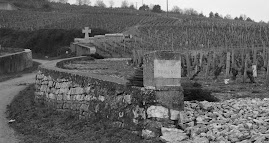L'Euripides c. 485 - 406 A.C.
The history of Italy is filled with mythical gods, wars, volcanoes, emperors, popes, and ruling families (that contributed to many of those popes) that spans thousands of years. The lore of the Roman, Grecian and Etruscans gods can be found in carvings and paintings in much of the artifacts found from all over the country. Some of the most powerful gods were the gods that governed sunlight, medicine, war, hunting, love and of course wine.
There are archeological digs that have discovered artifacts that include amorphas and goblets with carvings of Bacchus, the Roman god of wine. There is evidence in those paintings and carvings and in writings of a cult called the Bacchanalia. The cult was banned in 186 BC by the State because it’s nature-worshipping themes were not in tune with the Roman Republic. Julius Caesar lifted it, some 100 years later, in response to popular pressure as Bacchus became a favorite among the rich and powerful most notably Mark Antony who saw himself as a new Dionysus. The common denominator in this cult was the worship of the creation of wine and included lots of wild dancing and dressing up as mythical creatures, or possibly undressing, probably while consuming…. well…wine.
I certainly would love to have been there, but something I find very interesting is in some of the archeological digs that we (I) were talking about before we (I) got side tracked, there have been grape pips or seeds that can be carbon dated to 4000 – 6000 BC. Archeological scientists can also tell if a seed is cultivated or not cultivated and these are seeds that have been cultivated meaning they have been manipulated by man to produce a superior result.
Science proves that the production of wine precedes all of the mythology and lore of the gods of Greece, Rome and the Etruscans (whose god of wine was called Fufluns) and was possibly made by future family of the Tautavel man. And since Tautavel is in the heart of the Cote de Roussillon Villages in the south of France, I would think that would make sense.
Generally speaking, the Barolo sourced from vineyards near the first three communes are the biggest wines made, while the Barolo from the latter two communes are more refined and a bit more graceful. The Nebbiolo for Barbaresco is grown in and around the villages of Barbaresco, Neive, and Treiso, which are adjacent, to the North East of Alba.
There are differing schools of thought in the production of Barolo and Barbaresco. Wines produced in a traditional style will use extended maceration, not attempting to smooth out the grape tannins in any way and produce a wine that probably needs upwards of 10 years in bottle.
Traditionalists include: Bartolo Mascarello, G. Conterno,
G. Mascarello, Pio Cesare, Bruno Giacosa, Produttori del Barbaresco and perhaps, to some extent, Aldo Conterno.
Barolo and Barbaresco produced in a newer style uses new oak in the form of smaller barriques. Vanilla, spices and creaminess may all be evident in this style of winemaking. Tannins are managed better and the producers tend to strive for an approachable style of wine that is more fruit forward.
Non-traditionalists include : Domenico Clerico, Aldo Conterno, Prunotto, Marchesi di Gresy, Ceretto, Gancia, Conterno-Fantino and Angelo Gaja.
There was also a movement in the mid nineties where several prominent producers introduced legislation requesting the they be allowed the add no more than 10% of another grape, most likely Dolcetto or Cabernet to make their wines more accessible in great vintages or fuller bodied in weaker vintages. The opponents to this cited heritage and tradition. The decision was made by the consortium to stick to tradition and allow only Nebbiolo. Many wine makers now use the Langhe DOC on their wines forsaking the DOCG Barolo or Barbaresco to make the style of wine they prefer.
No matter what the style, the wines produced here are fabulous and can be found in all priced ranges. There are also plenty of other wonderful wines from Piedmont. Other reds like Barbera and Dolcetto that are made for more immediate consumption. Softly sparkling wine made from Moscato from the village of Asti. Crisp interesting whites made from the Cortese grape in the village of Gavi and Arneis from Roero. And of course Angelo Gaja makes a world class Chardonnay from vineyards named after his daughter Gaia and his grandmother, Clotilde Rey appropriately called Gaia & Rey.
And of those are materials for many rambling to come.
Mankind . . . possesses two supreme blessings. First of these is the goddess Demeter, or Earth whichever name you choose to call her by. It was she who gave to man his nourishment of grain. But after her there came the son of Semele, who matched her present by inventing liquid wine as his gift to man. For filled with that good gift, suffering mankind forgets its grief; from it comes sleep; with it oblivion of the troubles of the day. There is no other medicine for misery.
Euripides c. 485 - 406 B.C.
Santé


